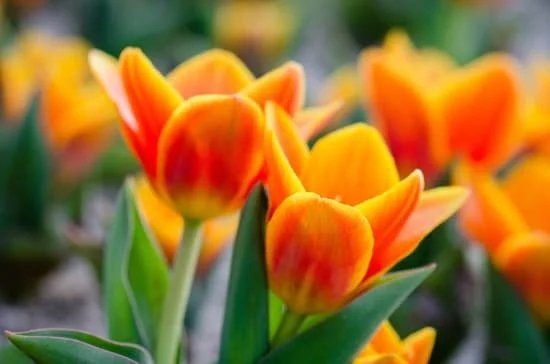Container vegetable gardening is a popular and versatile way to grow fresh produce, even in limited spaces. In this article on “Ideas for Container Vegetable Gardens,” we will explore various tips and techniques for creating a successful vegetable garden in containers. Whether you have a small balcony, patio, or just want to add some greenery to your home, container gardening can be a rewarding and convenient option.
One of the key advantages of container vegetable gardening is its flexibility. You can place your containers wherever there is sunlight, allowing you to customize your garden layout according to your space and aesthetic preferences. Additionally, container gardens are less susceptible to pests and diseases that may affect traditional garden beds. With the right knowledge and techniques, anyone can enjoy the satisfaction of growing their own vegetables right at home.
Throughout this article, we will cover topics like choosing the right containers, selecting the best vegetables for containers, soil and fertilizer tips, sunlight and watering requirements, creative container ideas, pest and disease management, harvesting and maintenance. By following these guidelines and ideas for container vegetable gardens, you can start your own thriving mini-garden regardless of your level of gardening experience or available space.
So let’s dive in and discover how you can grow nutritious veggies in containers with ease.
Choosing the Right Containers
Container vegetable gardening is a versatile and accessible way to grow your own fresh produce, even in limited spaces such as balconies, patios, or small yards. One of the crucial factors in successful container gardening is selecting the right containers for your plants. There are various options available, each with its unique advantages and considerations.
Traditional Pots
Traditional pots made from materials like clay, ceramic, or plastic are common choices for container vegetable gardens. They come in a wide range of sizes, shapes, and colors, allowing you to personalize your garden while providing adequate drainage for plant roots.
Raised Beds
Raised beds are another popular option for growing vegetables in containers. They provide better soil drainage and aeration compared to traditional pots. Raised beds also offer more depth for root growth, which can be beneficial for certain vegetables like tomatoes or peppers.
Hanging Baskets
For those with limited floor space, hanging baskets are an excellent choice for growing trailing vegetables like cherry tomatoes or herbs. These containers add vertical interest to your garden while keeping plants off the ground and away from potential pests.
Choosing the right containers based on your available space and the types of vegetables you want to grow is essential for a thriving container vegetable garden. Experimenting with different container options can lead to a beautiful and bountiful harvest of homegrown produce.
Selecting the Best Vegetables for Containers
When it comes to starting a container vegetable garden, selecting the right vegetables to grow is crucial for success. While almost any vegetable can be grown in containers, some varieties are better suited for limited space and shallow soil. Here are some vegetable varieties that thrive in container gardens:
1. Tomatoes: Cherry tomatoes, patio tomatoes, and determinate varieties like Roma are all excellent choices for container gardening. Make sure to provide adequate support for tomato plants as they grow.
2. Peppers: Bell peppers, jalapenos, and banana peppers do well in containers, especially when placed in a sunny spot with regular watering.
3. Herbs: Herbs like basil, parsley, mint, and chives are perfect for container gardening due to their compact size and minimal root system requirements.
4. Lettuce and Leafy Greens: Varieties of lettuce, spinach, kale, and Swiss chard can thrive in containers with well-draining soil and consistent watering.
5. Cucumbers: Compact bush varieties of cucumbers such as salad bush or space master are ideal for growing vertically in containers or on trellises.
By choosing the right vegetable varieties for your container garden, you can maximize space and yield while enjoying fresh produce at your fingertips. Experiment with different vegetables to find what works best in your specific growing conditions and preferences. The versatility of container gardening allows you to mix and match various vegetables to create a diverse harvest throughout the growing season. So get creative with your choices and start planting your own container vegetable garden today.
Soil and Fertilizer Tips
Container vegetable gardening can be a rewarding and efficient way to grow your own fresh produce, even in limited spaces. To ensure successful growth, choosing the right soil mix and fertilizers is crucial. Here are some tips to guide you in this aspect of container gardening:
- Use a high-quality potting mix specifically formulated for containers. These mixes are well-draining, lightweight, and provide the necessary nutrients for healthy plant growth.
- Avoid using garden soil in your containers, as it can become compacted and hinder root growth. Potting mixes are sterile and reduce the risk of soilborne diseases.
- Consider adding organic matter such as compost or worm castings to enhance the fertility of the soil mix. This will provide a steady supply of nutrients to your vegetable plants.
When it comes to fertilizing your container vegetables, it’s essential to feed them regularly throughout the growing season. Here are some fertilizer tips to keep in mind:
- Choose a balanced fertilizer with equal parts nitrogen, phosphorus, and potassium (N-P-K) or one that is tailored to the specific needs of vegetables.
- Follow the instructions on the fertilizer package for application rates and frequency. Avoid over-fertilizing, as this can lead to nutrient imbalances and potentially harm your plants.
- Consider incorporating slow-release fertilizers into your potting mix at planting time for a steady release of nutrients over an extended period.
By selecting the right soil mix and using appropriate fertilizers, you can provide your container vegetables with the essential nutrients they need to thrive and produce bountiful harvests. With proper care and attention to soil health, you’ll be well on your way to enjoying a successful container vegetable garden filled with an abundance of homegrown goodness.
Sunlight and Watering Requirements
Container vegetable gardening offers a flexible and convenient way to grow fresh produce even in limited spaces. However, to ensure the success of your container vegetable garden, it is essential to pay close attention to two key elements: sunlight and watering. Adequate sunlight is crucial for healthy plant growth and bountiful harvests, while proper watering ensures that your vegetables thrive without being under or overwatered.
When it comes to sunlight requirements, most vegetables prefer at least 6 hours of direct sunlight per day. Ensure that your containers are placed in a location where they receive ample sunlight to promote photosynthesis and overall plant health. In some cases, you may need to move your containers throughout the day to follow the sun’s path or consider using artificial grow lights for supplemental lighting.
In terms of watering, container vegetable gardens require more frequent watering compared to traditional garden beds as pots tend to dry out faster. It is important to check the moisture levels of the soil regularly by sticking your finger into the soil; if it feels dry an inch below the surface, it’s time to water.
Overwatering can lead to root rot, while underwatering can stunt growth and diminish crop yields. To help you stay on top of watering needs for your container vegetables, consider using self-watering containers or installing drip irrigation systems for efficient moisture management.
- Ensure containers receive at least 6 hours of direct sunlight per day
- Monitor soil moisture levels regularly by checking an inch below the surface
- Consider moving containers throughout the day or using artificial grow lights for supplemental lighting
- Avoid overwatering by allowing excess water to drain out from the bottom of pots
- Use self-watering containers or drip irrigation systems for efficient moisture management
Ultimately, understanding and meeting the sunlight and watering requirements of your container vegetable garden will set the stage for a successful harvest season. By providing your plants with the right balance of light and water, you can enjoy a vibrant and thriving garden filled with delicious homegrown veggies. With these tips in mind, you can create a flourishing container vegetable garden that yields an abundance of fresh produce for you and your family to enjoy.
- Keep track of weather conditions that may impact sunlight exposure such as cloud cover or shade from nearby buildings
- Adjust watering frequency based on temperature fluctuations and seasonal changes
- Aim for consistency in watering practices rather than sporadic heavy watering sessions
Creative Container Ideas
Container gardening offers endless possibilities for creativity and personalization, allowing individuals to showcase their unique style while growing fresh produce. When it comes to creating a container vegetable garden, the choice of container can greatly impact the overall aesthetic and functionality of the garden. From traditional terracotta pots to repurposed items, there are various creative container ideas that can inspire and enhance your vegetable garden.
Upcycled Containers
One popular trend in container gardening is using upcycled or recycled containers to grow vegetables. Old wooden crates, metal buckets, tin cans, and even plastic bottles can be transformed into charming planters with a little creativity. Not only does upcycling reduce waste and promote sustainability, but it also adds character to your garden. Consider painting or decorating these containers for a personalized touch that complements your outdoor space.
Vertical Gardens
For those with limited space or looking to add an element of verticality to their gardens, vertical planters are a great option. Vertical gardens can be created using hanging baskets, wall-mounted planters, stacked containers, or even repurposed pallets. By utilizing vertical space effectively, you can maximize your growing area and create a visually striking display of cascading plants. This type of container arrangement is not only functional but also adds an interesting dimension to any outdoor setting.
Succulent Containers
In addition to traditional vegetable planters, consider incorporating succulents into your container garden for added visual interest. Succulents are low-maintenance plants that come in a variety of shapes and colors, making them perfect companions for vegetables.
Planting succulents alongside vegetables in unique containers such as hypertufa troughs or hanging orbs can create a harmonious balance between edibles and ornamentals in your garden. The juxtaposition of textures and forms will elevate the overall appeal of your container vegetable garden while promoting biodiversity.
Pests and Disease Management
Pests and diseases can pose a significant challenge to the success of your container vegetable garden. However, with the right knowledge and practices, you can effectively manage these issues and protect your precious plants. One of the most important steps in pest and disease management is prevention. By implementing some simple strategies, you can reduce the likelihood of encountering problems in the first place.
One effective method for preventing pests and diseases in your container garden is to practice good sanitation. This includes regularly cleaning your containers, tools, and surrounding area to remove any potential hiding spots for pests or sources of disease.
Additionally, choosing disease-resistant varieties of vegetables can help minimize the risk of infections taking hold in your garden. Another preventive measure is to space out your plants properly to allow for good air circulation, which can help prevent the spread of diseases.
Despite best efforts at prevention, pests and diseases may still find their way into your container vegetable garden. When faced with an infestation or infection, it is essential to act quickly and decisively to prevent further damage. There are natural remedies that you can use to control common pests such as aphids, spider mites, or caterpillars without resorting to chemical pesticides.
For fungal or bacterial diseases, removing affected plant parts promptly and ensuring proper ventilation can help stop the spread within your garden. By staying vigilant and taking prompt action when needed, you can effectively manage pests and diseases in your container vegetable garden.
| Preventive Measures | Actions |
|---|---|
| Practice good sanitation | Regularly clean containers, tools, and surrounding area |
| Choose disease-resistant varieties | Minimize risk of infections |
| Ensure proper spacing for air circulation | Prevent spread of diseases |
Harvesting and Maintenance
When it comes to harvesting vegetables from your container garden, timing is key. Different vegetables have varying maturity times, so it’s crucial to know when each crop is ready for harvesting.
For example, tomatoes should be picked when they are fully ripe and have a rich color, while leafy greens like lettuce can be harvested continuously by picking the outer leaves first. Be sure to refer to the specific guidelines for each vegetable variety you have planted in your containers.
In addition to proper harvesting techniques, regular maintenance is essential for the long-term success of your container vegetable garden. This includes tasks such as watering, fertilizing, pruning, and inspecting for pests or diseases. Watering requirements may vary depending on the size of your containers and the type of vegetables you are growing. It’s important to check the moisture levels regularly and adjust your watering schedule accordingly.
For ongoing maintenance, consider adding a layer of mulch to help retain moisture in the soil and prevent weed growth. Pruning dead or damaged plant parts will promote healthy growth and improve air circulation around your plants.
Regularly inspecting your container garden for common pests like aphids or diseases such as powdery mildew will allow you to take timely action if any issues arise. By staying proactive with maintenance tasks, you can ensure a bountiful harvest from your container vegetable garden throughout the growing season.
| Vegetable | Harvest Timing |
|---|---|
| Tomatoes | Fully ripe with rich color |
| Lettuce | Pick outer leaves first for continuous harvesting |
Conclusion
In conclusion, container vegetable gardening is a versatile and rewarding way to grow your own fresh produce, even if you have limited space. By choosing the right containers, selecting the best vegetables, and providing the necessary care, anyone can enjoy a bountiful harvest right at their doorstep. The benefits of container gardening extend beyond just saving space – it also allows for better pest control, easier maintenance, and greater control over soil quality.
As you embark on your own container vegetable garden journey, remember the importance of sunlight and proper watering to ensure healthy plant growth. Experiment with creative container ideas to make your garden uniquely yours, whether it’s repurposing old buckets or investing in decorative pots. Don’t forget about soil quality and fertilization, as these are crucial factors in cultivating thriving plants.
Whether you’re a seasoned gardener or a beginner looking for a new hobby, container vegetable gardens offer endless possibilities. With the right guidance and dedication to caring for your plants, you can enjoy a constant supply of fresh vegetables throughout the growing season. So why wait? Start planning your own container vegetable garden today and reap the rewards of homegrown goodness right at your fingertips.
Frequently Asked Questions
What Vegetables Grow Well Together in a Container?
Certain vegetables thrive when planted together in a container due to their complementary growth habits or similar water and sunlight requirements. For example, tomatoes and basil are good companions in a container garden because the tomato plants provide shade for the basil while both benefit from consistent watering.
What Vegetables Are Best to Grow in Containers?
When considering which vegetables to grow in containers, it’s important to choose crops that don’t have extensive root systems or require a lot of space. Vegetables like cherry tomatoes, lettuce, radishes, peppers, and herbs such as parsley and mint are ideal for container gardening because they adapt well to limited spaces and can be easily managed.
What Do You Put in the Bottom of a Vegetable Container?
To ensure proper drainage at the bottom of a vegetable container, it is recommended to add a layer of materials such as rocks, gravel, or broken pottery pieces. This layer helps prevent water from accumulating at the bottom of the container and causing root rot in the plants.
Additionally, using a quality potting mix specifically designed for containers can help provide adequate nutrients for healthy plant growth.

Welcome to my gardening blog! I am passionate about plants and enjoy sharing my knowledge and experiences with others. In this blog, I will write about everything related to gardening, from tips on how to get started to updates on my own garden projects.





